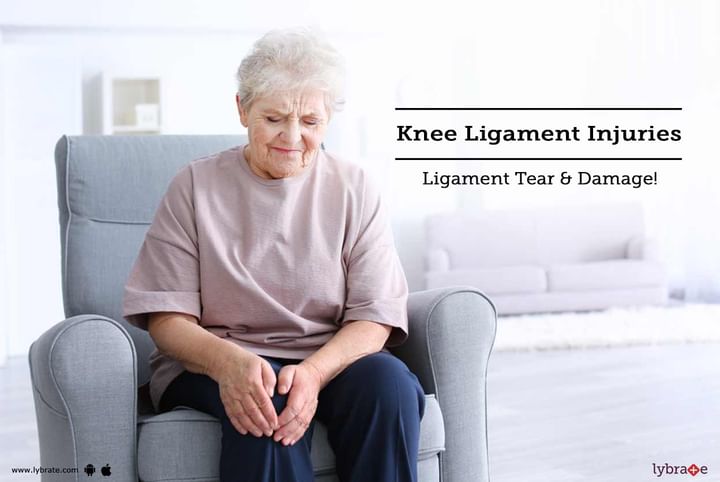Get the App
For Doctors
Login/Sign-up
Last Updated: Jan 10, 2023
BookMark
Report
Knee Ligament Injuries - Ligament Tear & Damage!
There are many situations under which people may go through joint or muscle damage. There are other portions that may also go through the side effects of such damage. During the damage, a knee ligament might be overstretched (sprained), or at times even torn. A ligament tear can be incomplete (only a portion of the filaments that make up the tendon are torn) or complete (the tendon is torn totally). Knee tendon wounds can bring about pain, swelling, wounding and lessen the movement of your knee. Your knee joint may feel unsteady and you may walk with a limp.
There are four tendons in the knee that could get damage:
- The anterior cruciate ligament (ACL) is one of the two noteworthy tendons in the knee. It connects the thighbone and the shinbone in the knee.
- The posterior cruciate ligament (PCL) is the second significant tendon in the knee also connecting the thighbone to the shinbone in the knee.
- The lateral collateral ligament (LCL) connects the thighbone to the fibula, the littler bone of the lower leg on the parallel or external side of the knee.
- The medial collateral ligament (MCL) additionally connects the thighbone to the shinbone on the medial or inside of the knee.
Side effects can include the following:
- A popping sound or feeling at the time of the injury can in some cases be heard if a ligament is entirely torn.
- Swelling of your knee. When a tendon is harmed, there might be some bleeding inside your knee joint from the harmed tendon. This can lead to knee swelling. The level of swelling will rely upon the seriousness of the damage. Minor ligament sprains may bring about a little amount of swelling, though totally torn ligaments may cause more damage.
- Pain in your knee. Once again, the level of pain depends upon the seriousness of the knee damage.
- Your knee might ache even on touching it.
- Chondromalacia patella is a condition in which the cartilage under the knee cap becomes softer.
- A feeling that your knee is might not be stable or even if you would be able to stand on it. This may make you limp. This too depends upon how serious the damage to the tendon is.
- Wounds around your knee can occur at times. It might take some time to heal.
Treatments that can help elevate the pain are as follows:
- Rest the knee
- Ice your knee to get rid of pain and swelling
- Apply compression on your knee
- Raise your knee on a pad when you are sitting or resting
- Wear a knee brace to balance the knee
- Take painkillers as recommended by your specialist. If you wish to discuss about any specific problem, you can consult an Orthopedist.



+1.svg)
